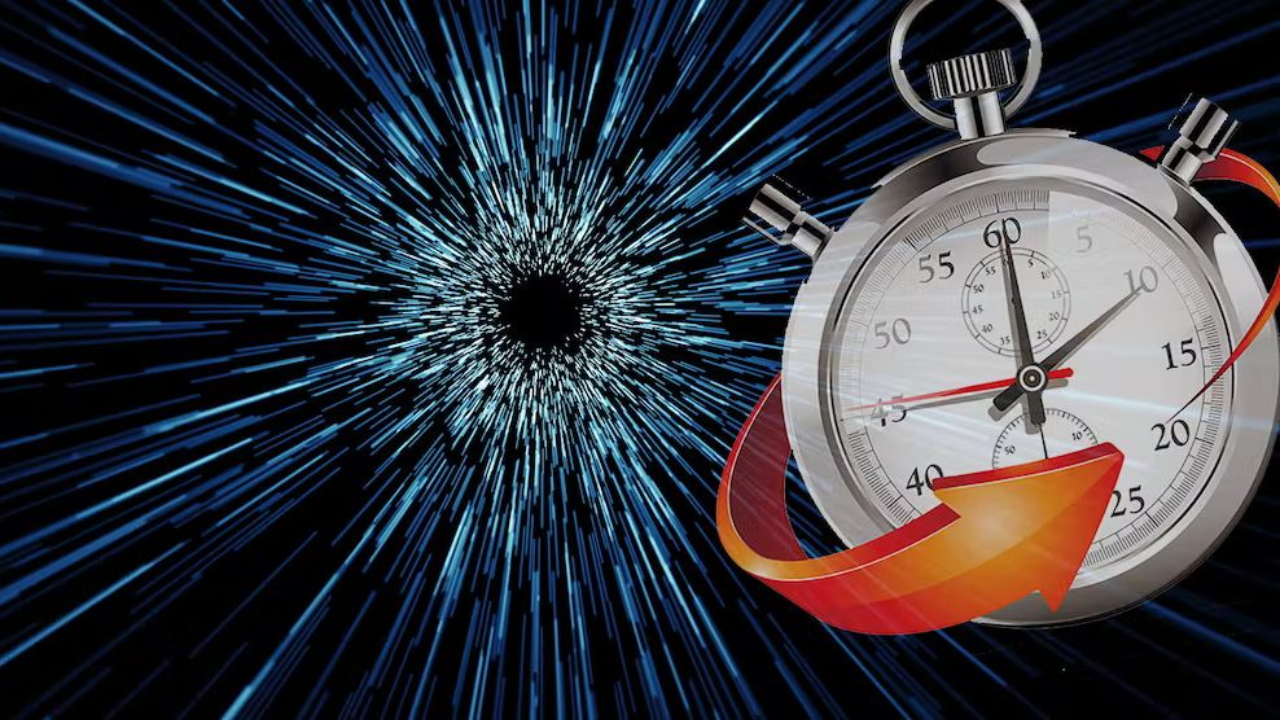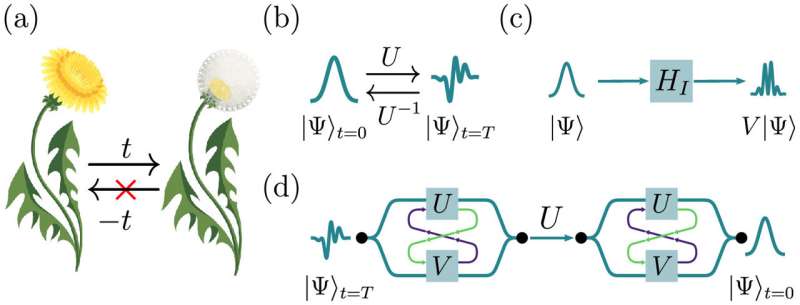Reversing Quantum Processes Now Made Empirically Possible!

Credit: Shutterstock/Getty Images
By Amal Pushp, Affiliate Physicist at the Resonance Science Foundation
We are quite aware of the directionality of time. Everything we know of seems to follow a particular pattern and all events tend to move in a unidirectional path. In other words, it is conventionally known that once a particular event has occurred, there’s no chance that it can be reversed. The physical reason is simple and that is the arrow of time. In general, the arrow of time points in a single forward direction and this is one of the major unsolved challenges of the foundations of physics because physicists are uncertain of why the nature of time is such.
Time as an entity can’t be controlled or manipulated. However, we can manipulate a physical system’s evolution in time and evaluate its metamorphosis from one state to another by careful observation, at least in the classical world. In the quantum domain, even this is apparently a barrier since an act of observation changes the features of a quantum system. There is even concrete evidence that suggests that quantum properties are contextual or in other words, the values of physical observables associated with a quantum system exist only within the context of measurement and not in the literal sense. This is another aspect of the foundations of quantum mechanics that is not understood well enough.
Now there exists in the realm of non-relativistic quantum mechanics, certain principles or methods that can allow resetting an essentially uncontrolled quantum state to a previous state that the system had already undergone. These principles or so-called rewinding protocols have been proven, at least in theory [1, 2].
 a) In the classical world, there is an unmistakable directionality to time, illustrated here through the process of aging, a process that cannot be reversed in practice despite its deterministic nature. In this paper, we show that these same limitations do not apply in the quantum realm. (b) The unitarity of quantum mechanics guarantees that an inverse of a given time evolution 𝑈 always exists, even though it may be unknown. (c) By letting a target quantum system pass through an interaction region, a perturbed time evolution 𝑉 can be realized. (d) A quantum switch makes the target system evolve in a superposition of its free evolution 𝑈 and perturbed evolution 𝑉. This superposition of time evolutions can be used to “rewind” the system backwards in time, without requiring any knowledge about either 𝑈, 𝑉, or the state | Ψ ⟩. Image and Description: Optica (2022).
a) In the classical world, there is an unmistakable directionality to time, illustrated here through the process of aging, a process that cannot be reversed in practice despite its deterministic nature. In this paper, we show that these same limitations do not apply in the quantum realm. (b) The unitarity of quantum mechanics guarantees that an inverse of a given time evolution 𝑈 always exists, even though it may be unknown. (c) By letting a target quantum system pass through an interaction region, a perturbed time evolution 𝑉 can be realized. (d) A quantum switch makes the target system evolve in a superposition of its free evolution 𝑈 and perturbed evolution 𝑉. This superposition of time evolutions can be used to “rewind” the system backwards in time, without requiring any knowledge about either 𝑈, 𝑉, or the state | Ψ ⟩. Image and Description: Optica (2022).
Going to the core of the rewinding protocol, one would find that it essentially emerges from one of the fundamental concepts of quantum mechanics and that is the non-commutative nature of quantum operators. To be explicit, if two quantum operators are such that they do not commute, then it is practically impossible for us to have a precise value of the observables simultaneously. Another unique characteristic of these protocols is that even if a fault occurs and the protocol fails to deliver, there is a possibility to introduce new protocols that can revoke the fault and smoothly navigate the system to the original quantum state.
We talked about the absurdity associated with observing a quantum system. Despite this problem of measurement inherent to quantum mechanical behavior, utilizing the rewinding protocol physicists have successfully reversed the evolution of a quantum system without knowing its associated initial and final states [3]. The protocol has been exploited in the lab based at the Institute for Quantum Optics and Quantum Information (IQOQI) in Vienna. This was essentially made possible by integrating the theoretical rewinding protocol with a state-of-the-art optical arrangement. The quantum system for which time reversal was empirically demonstrated consisted of a single quantum of light or photon.
The researchers involved in the novel work claim in the original paper that their method has a far greater rate of success than existing protocols in the scientific literature and perhaps future experiments can further enhance the precision of the method. Additionally, there could be a revelation of novel regimes and systems where the protocol could be practically implemented. One of the most peculiar aspects of the work is that it is not at all necessary for the experimenter to know a priori the key information and constraints of the quantum system under study and this deterministically leads to the conclusion that the protocol is not just restricted to photons. Given the practical realization of time reversal for quantum processes, it would not be surprising to remark that the future is quite bright for quantum technologies.
References
[1] Miguel Navascués, Resetting Uncontrolled Quantum Systems, Physical Review X (2018). DOI: 10.1103/PhysRevX.8.031008
[2] David Trillo, Benjamin Dive, and Miguel Navascues, Translating Uncontrolled Systems in Time, Quantum (2020). DOI: 10.22331/q-2020-12-15-374
[3] P. Schiansky et al, Demonstration of universal time-reversal for qubit processes, Optica (2022). DOI: 10.1364/OPTICA.469109



